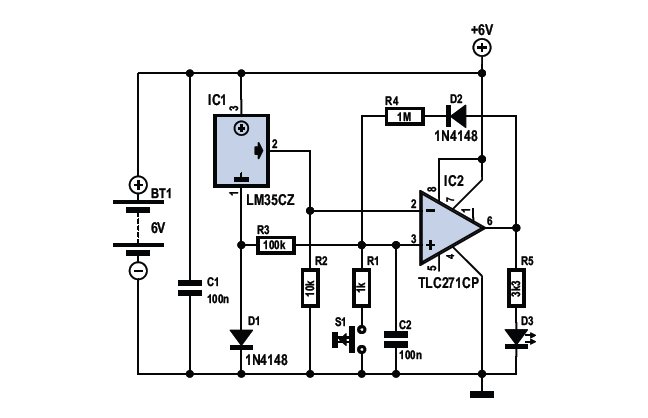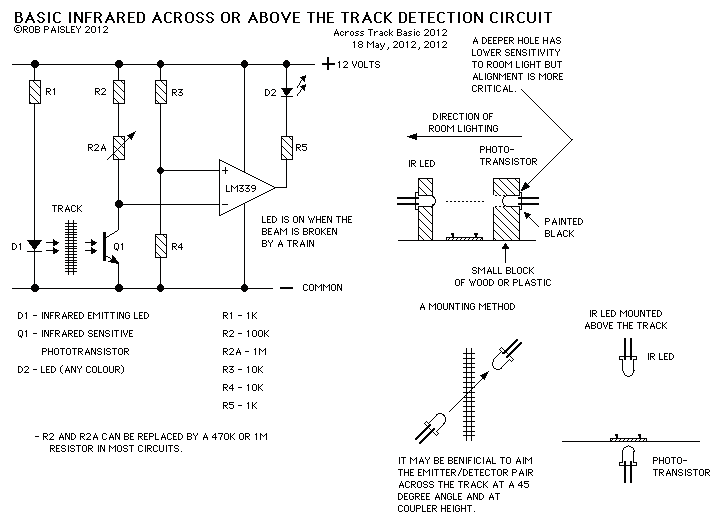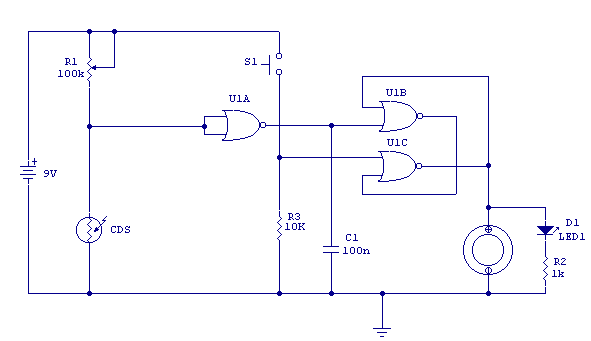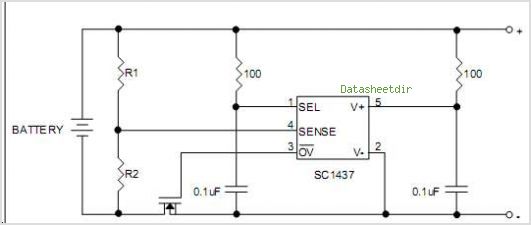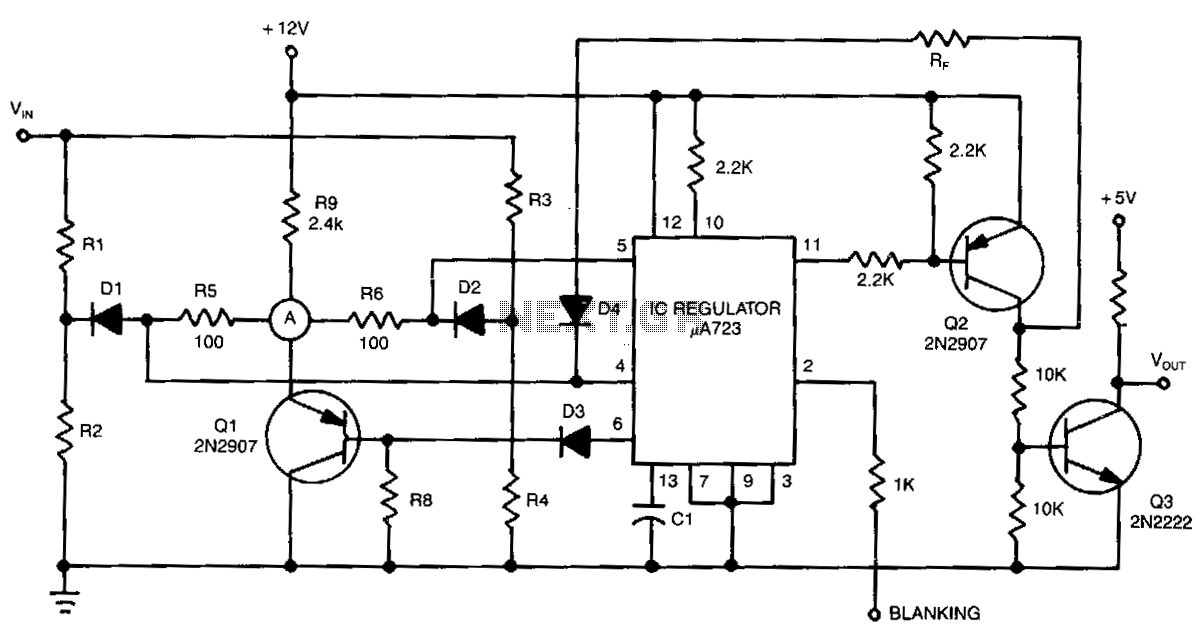
Ionization chamber smoke detector
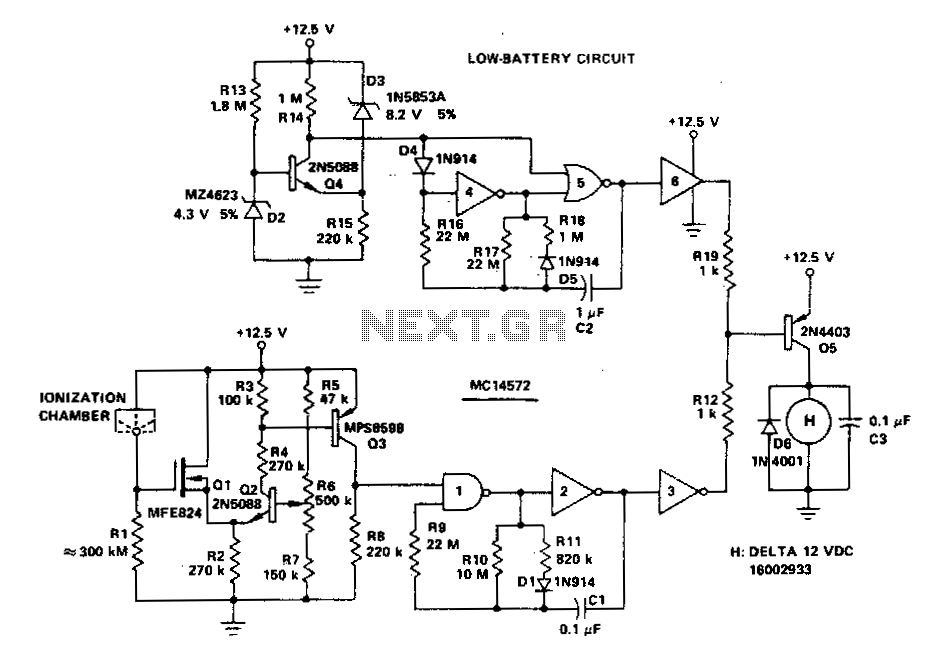
A battery-operated ionization chamber smoke detector features a circuit designed to generate a distinct alarm when the battery approaches the end of its useful life. The circuit employs the MCMOS MC14572 integrated circuit for two alarm oscillators, one for smoke detection and the other for low battery indication. Additionally, the circuit incorporates five discrete transistors functioning as buffers and comparators.
The battery-operated ionization chamber smoke detector utilizes an ionization chamber to detect smoke particles in the environment. When smoke enters the chamber, it disrupts the ion flow, leading to a decrease in current. This change is detected by the MC14572, which is configured to trigger an alarm signal when the current falls below a predefined threshold.
The MC14572 serves as the core component for generating alarm signals. It contains two oscillator circuits: one dedicated to detecting smoke and the other to monitoring battery voltage. The smoke alarm oscillator is activated when the ionization current indicates the presence of smoke, while the low battery oscillator is triggered when the battery voltage drops below a critical level, providing an audible alert to the user.
In addition to the MC14572, the circuit employs five discrete transistors. These transistors act as buffers, isolating the oscillator outputs from the rest of the circuit to prevent loading effects that could alter the performance of the alarm signals. They also function as comparators, allowing the circuit to compare the voltage levels of the battery and the ionization chamber output against reference levels. This ensures reliable and accurate detection of both smoke and low battery conditions.
Overall, the design of this smoke detector circuit emphasizes reliability and user safety by integrating advanced components and providing distinct alerts for smoke detection and battery status, thereby ensuring that users are promptly informed of any potential hazards.Battery-operated, ionization chamber smoke detector includes a circuit to generate a unique alarm when the battery reaches the end of its useful life. The circuit uses the MCMOS MC14572 for two alarm oscillators (smoke and low battery) This circuit additionally uses five discrete transistors as buffers and comparators.
The battery-operated ionization chamber smoke detector utilizes an ionization chamber to detect smoke particles in the environment. When smoke enters the chamber, it disrupts the ion flow, leading to a decrease in current. This change is detected by the MC14572, which is configured to trigger an alarm signal when the current falls below a predefined threshold.
The MC14572 serves as the core component for generating alarm signals. It contains two oscillator circuits: one dedicated to detecting smoke and the other to monitoring battery voltage. The smoke alarm oscillator is activated when the ionization current indicates the presence of smoke, while the low battery oscillator is triggered when the battery voltage drops below a critical level, providing an audible alert to the user.
In addition to the MC14572, the circuit employs five discrete transistors. These transistors act as buffers, isolating the oscillator outputs from the rest of the circuit to prevent loading effects that could alter the performance of the alarm signals. They also function as comparators, allowing the circuit to compare the voltage levels of the battery and the ionization chamber output against reference levels. This ensures reliable and accurate detection of both smoke and low battery conditions.
Overall, the design of this smoke detector circuit emphasizes reliability and user safety by integrating advanced components and providing distinct alerts for smoke detection and battery status, thereby ensuring that users are promptly informed of any potential hazards.Battery-operated, ionization chamber smoke detector includes a circuit to generate a unique alarm when the battery reaches the end of its useful life. The circuit uses the MCMOS MC14572 for two alarm oscillators (smoke and low battery) This circuit additionally uses five discrete transistors as buffers and comparators.
